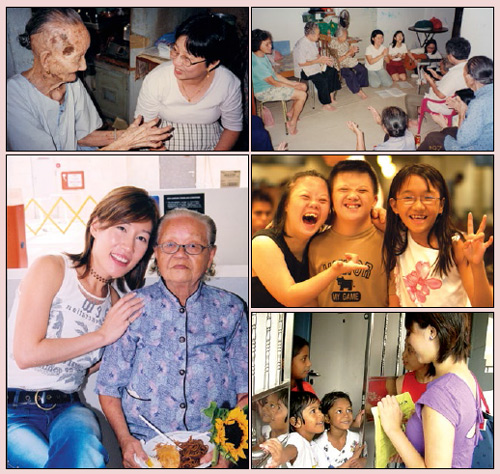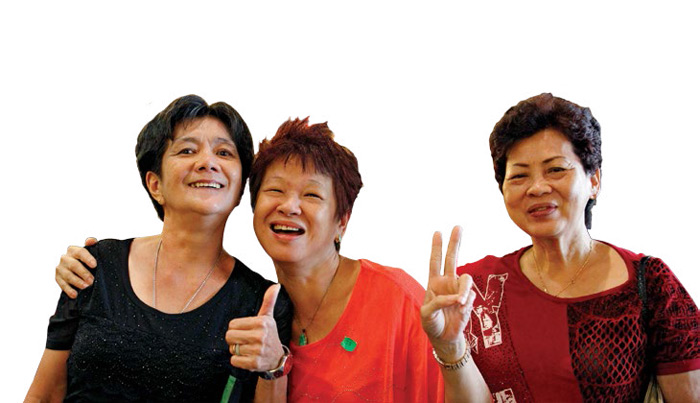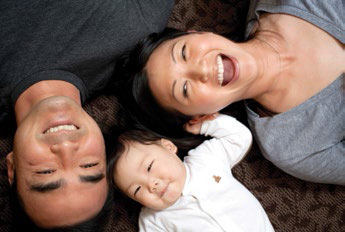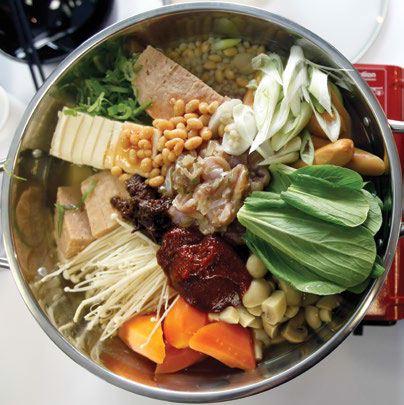City Harvest Community Services Association is the helping hand of CHC, but it has, in its 18 years, become much more than a community service body: it brings aid to society’s needy and promotes positive values through volunteerism.
In the first decade of its existence, City Harvest Community Services Association actively provided help and resources to many needy demographics, from low-income families to children-at-risk. Today, 18 years since it was first founded, CHCSA continues to provide to some of these, but what sets this community services body apart from most is its big thinking: its encompassing vision is to help the community at large to live a better life physically, mentally and emotionally.
Built on a firm foundation of love and a genuine passion to help society, one person at a time, CHCSA has made a difference to 78,041 beneficiaries since it was first registered as a society on Aug 16, 1997.
While many are familiar with the idea of a “hand up and not a hand out”, CHCSA aims to take things a step further: “Let’s make that a hand shake,” says Darryl Loh, the association’s Executive Director. “Right now, the relationship between the giver and the beneficiary remains ‘us vs them’, which is a very traditional mindset we hope to change.
“In our work, we aim to restore hope and build resilience in vulnerable populations; to build a community that is connected and compassionate.” It is a bold—if unquantifiable—aim.
But if one is looking for numbers, CHCSA has them. “We reached out to 680 beneficiaries in 1997,” says Loh. “Last year, we served 7,476 individuals.” Loh works with a team of 12 full-time staff and 1,106 volunteers to serve these beneficiaries, who fall into different aspects of society. Aid is regardless of race, language or religion. CHCSA truly loves all, serves all.
Holding on to its belief that serving people is not just a duty but a passion, CHCSA has brought immeasurable impact to different demographics in society youth-at-risk, abandoned elderly, multiple sclerosis patients, the terminally-ill and HIV-positive patients.
CHCSA continually seeks to improve, streamline, finetune its processes in order to meet real needs more quickly and effectively and to bring help to people who aren’t getting any. Core, traditional services remain today, such as financial aid and services to MS patients and HIV/Aids patients.
RETHINKING ELDERCARE
At the beginning of 2011, CHCSA expanded its services to the elderly by starting House of JOY (the acronym for “Joining the Old and the Young”), a centre focused on helping seniors to lead fulfilling and enriched lives especially in the sunset years. While there were other eldercare centers that actively reached out to residents of housing blocks who had been neglected or abandoned, HOJ wants to create a mindset shift—that the elderly can continue to be a contributing and vibrant part of community living.
Most afternoons, Mdm Goh, 93, together with eight other seniors and five volunteers sew away busily at the House Of Joy eldercare center. Some of the seniors that frequent the center first came to the attention of the agency about 10 years ago through Community Outreach Program to the Elderly (COPE), in which befrienders make weekly home visitations to the elderly and provide support, such as household maintenance and escort services to medical check-ups to more than 350 households each month. COPE is an interchurch initiative that has actively supported the underprivileged elderly citizens living in the Pine Close, Mountbatten and Old Airport Road estates.
With help from 120 volunteers, HOJ has reached 3,168 seniors since its opening. “We want to empower the elderly to live a healthy, well-balanced life that is fulfilling and well connected inter-generationally,” explains Loh.
In August 2011, the 329 sqm-large HOJ center opened its doors to the elderly folks who were already familiar to the staff of the center. Housing a multi-purpose hall and activity room, meeting and counseling rooms, a multimedia and recreational room, a café operated by senior citizens, a KTV room and IT facilities, CHCSA continues to serve the senior citizens by providing counseling, in-house exercise programs, learning workshops and activities.
TRANSFORMING MINDSETS
Two years after the opening of HOJ, CHCSA launched into another project to benefit the community at large. Red Nose is a volunteer-driven movement that aims to promote better living through love and laughter through various events and initiatives. Supported by Singapore Kindness Movement, Red Nose presents an opportunity for CHCSA to rope Singaporeans in to support and care for needy individuals, as well as to promote kindness and care throughout society. Since 2013, Red Nose has launched 55 initiatives of love and laughter events, reaching 3,937 beneficiaries and 19,771 participants.
Loh reveals that this year, Red Nose continues to focus on engaging the community through activities such as “I Hug”, which encourages displays of affection for family members, for example, “I Hug My Mom”; Little Acts of Kindness, in which Singaporeans are urged to perform kind acts such as holding a door open for a stranger; and Red Dish, a community food program where diners can pay in cash or in service to the community.
“Red Nose is CHCSA’s community projects arm. While we used to have volunteers conduct ‘home makeovers’ for one-room-flat dwellers, that now comes under Red Nose’s ‘Paint The Town Red’ initiative,” she explains. “Red Nose offers many opportunities for the community to get involved in changing their world for good.”
Singapore is not a welfare state, notes Loh, yet there is more and more money being pumped into helping the poor. It is a good thing, she says, as it frees up organizations like CHCSA to look beyond physical and financial needs. “CHCSA’s vision is to build inclusive and resilient communities,” says Loh, underscoring the need for greater social responsibility across society. “We want people to stand on their own feet, to be empowered find solutions to their issues. We believe that each community has the resources within it to meet the needs and solve the problems that each individual may face.”
Citing recent instances of xenophobia and segregation in Singapore, Loh points out that Singapore is a nation historically comprised of migrants. “When our nation first started, who cared if you were a mata or a samsui woman, if you came from India or China? Everyone deserved respect and possessed dignity. So why do we think differently now? Have we forgotten who we are? Red Nose wants to help change this in two ways: first, we change the way we help others by treating them as equal, not inferior to us. Second, we blur the line between ‘us’ and ‘them’.” She admits it is an ongoing conversation for CHCSA, but one worth developing.
It’s not a traditional approach to community service, but Loh emphasizes this: “CHCSA has always wanted to be relevant in society. We may have adjusted our approach since Church Without Walls to meet evolving needs, but it remains our motto to touch hearts and change lives.”
CHURCH WITHOUT WALLS MADE FLESH
 In 1995, Kong Hee, the senior pastor of City Harvest Church, returned from a conference in Hawaii to share with his congregation a God-breathed message of building a church without walls. The message powerfully communicated the importance of bringing God’s love and compassion to all who need it in society. It sparked off a chain of community outreach efforts that touched the lives of the elderly and the intellectually disabled, among other groups.
In 1995, Kong Hee, the senior pastor of City Harvest Church, returned from a conference in Hawaii to share with his congregation a God-breathed message of building a church without walls. The message powerfully communicated the importance of bringing God’s love and compassion to all who need it in society. It sparked off a chain of community outreach efforts that touched the lives of the elderly and the intellectually disabled, among other groups.
Birthed out of the vision to find a need and meet it, to find a hurt and heal it, Church Without Walls was officially registered as City Harvest Community Services Association in August 1997.
Among the works of CHCSA in its 18-year history which are now undertaken by different ministries within the church are KITE (Kids In Total Embrace), which offers a full spectrum of programs for children; RAYZ, an initiative to help the intellectually-challenged and M3 (Mighty Men in the Making), which helps men who have been incarcerated or are in rehabilitation.
WALKING OUT OF LONELINESS
 Mdm Tay, 54 and Mr Ong, 61 are an elderly couple that House Of JOY has been reading out to since Mar 15, 2013. When workers from HOJ first visited them, Ong had diagnosed with terminal liver cancer and Tay had multiple sicknesses. They have no children and their relationships with relatives were strained.
Mdm Tay, 54 and Mr Ong, 61 are an elderly couple that House Of JOY has been reading out to since Mar 15, 2013. When workers from HOJ first visited them, Ong had diagnosed with terminal liver cancer and Tay had multiple sicknesses. They have no children and their relationships with relatives were strained.
Tay was not very mobile as a result of a stroke, and she had a leg condition that made walking short distances excruciating. Her husband works odd jobs to earn as much money as he can while he is still active, and she would often be left alone. When she discovered that her husband was terminally ill, Tay fell into depression. The couple also struggled with paying their medical bills as they were not fully subsidized.
Upon learning of their situation, the HOJ team put together resources to help them. One of the staff gathered necessary documents like medical certificates from the doctor and resubmitted Ong’s insurance claims. At the same time, the staff also wrote in to Central Provident Fund to allow Ong to use his Medisave fund for full coverage of his medical bills. Knowing that Tay has depression and weak legs, HOJ roped in social workers to counsel her and a trained physiotherapy assistant to help her practice leg strengthening exercises. HOJ also engaged a homecare nurse to do regular health checks and monitor the couple’s conditions.
The staff also found out that the couple had not left the house for the past few decades because of their health conditions. So the staff and volunteers arranged to bring the couple out to the SEA Aquarium on wheelchairs. During Valentine’s Day last year, HOJ staff set up a special candlelight luncheon at HOJ to give them an opportunity to relive their dating days. At the end of the luncheon, the staff taught the couple how to do scrapbooking with photos from their SEA Aquarium trip—these were the first photos they had taken in many years.
To help Tay increase her social interaction, a kind donor paid for a wheelchair for her so that she can leave her house and participant in social activities held at HOJ. Now, the couple actively participate in HOJ activities two to three times a week. Their quality of life has improved due to the successful financial assistance application. Most importantly, they found meaningful relationships at HOJ. Tay has since come out of depression.
CHCSA IN NUMBERS
 House of JOY Eldercare Centre
House of JOY Eldercare Centre
Situated at Pine Close, HOJ provides social services to the older population to promote long learning to the elderly, and provide them with a community to belong in.
- 2,013 elderly persons benefited from HOJ services in 2013
- 1,718 elderly persons are visited by volunteers and staff
- 394 elderly persons took part in in-house programs
- 12 in-house program were organized
 POD/Red Nose
POD/Red Nose
Formed in 2007, POD provided holistic care and development opportunities for youth, giving them the opportunity to be equipped with life skills. CHCSA also invests into various community initiatives such as a mobile blood donation program and home makeover projects for the less fortunate. In 2013, these initiatives became part of the Red Nose Movement, together with Red Dish, a community food program that allows diners to pay what they like for a meal, in cash or community acts. The more one pays for a meal, the more free meals Red Dish can provide.
- 32 homes of the underprivileged received a makeover
- 728 people donated blood successfully
- 3,937 people benefitted from the POD/Red Nose initiatives
 Family Services
Family Services
Family Services provides financial aid and social-emotional counseling to needy families in order to strengthen resilience within the family units.
- 180 families benefited in 2013
- 1,629 people were contacted by volunteer workers
- $63,553 was disbursed through financial assistance
 Patient Care Services
Patient Care Services
CHCSA provides services to the people suffering from multiple sclerosis through MS Care and people who are terminally ill through FIRST Hand.
- 230 clients assisted by First Hand in 2013
- 51 clients assisted by MS Care
- 6,744 clients were contacted by volunteers and workers


